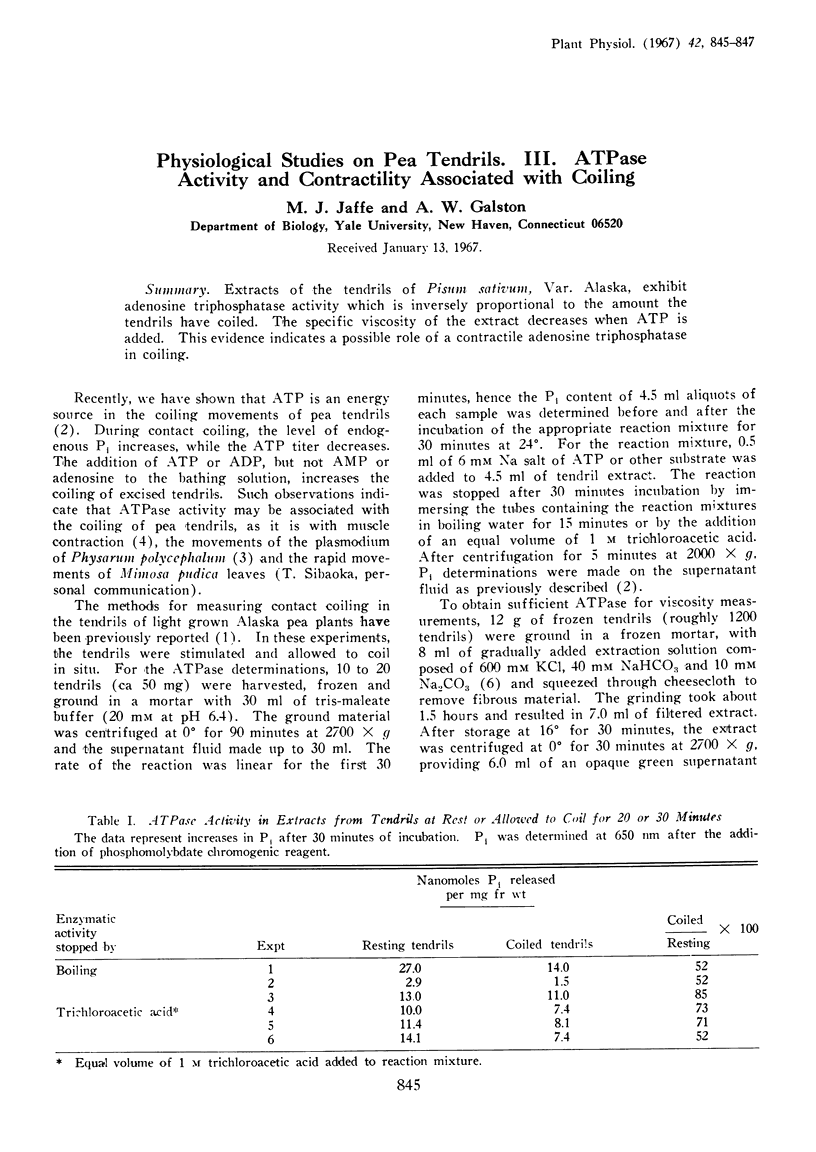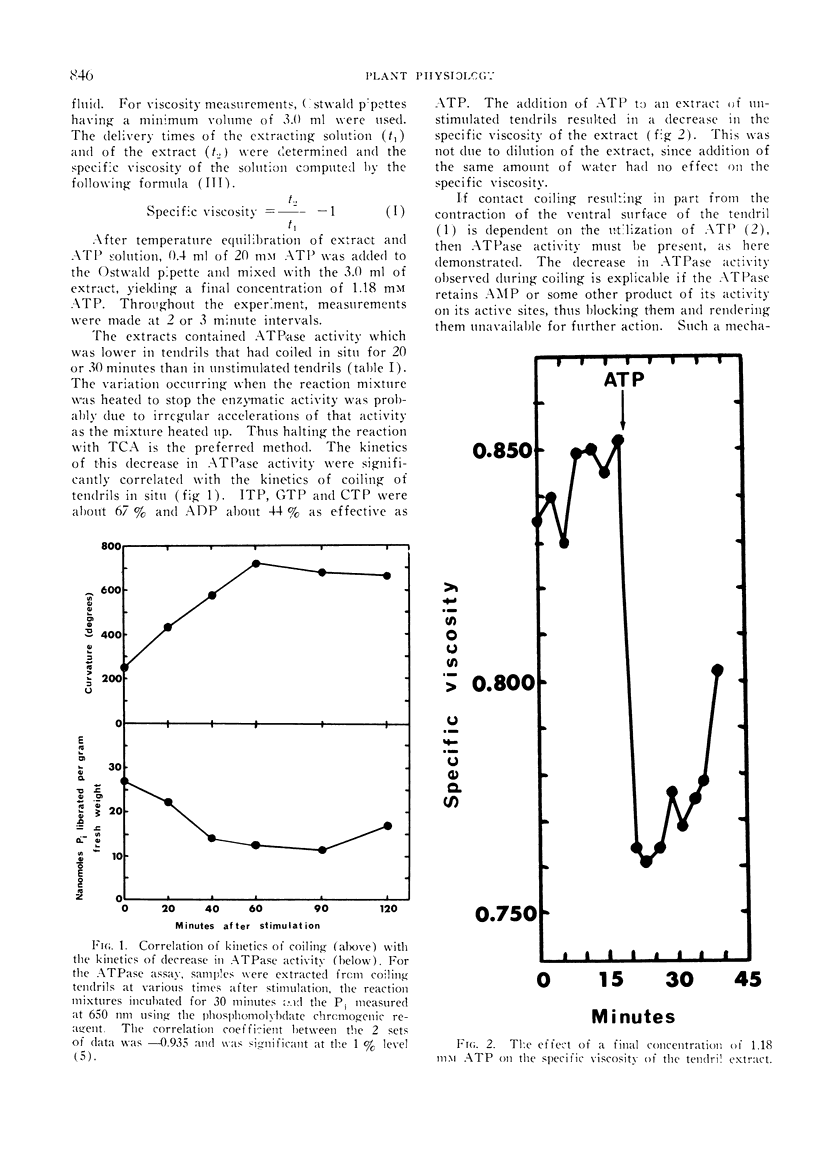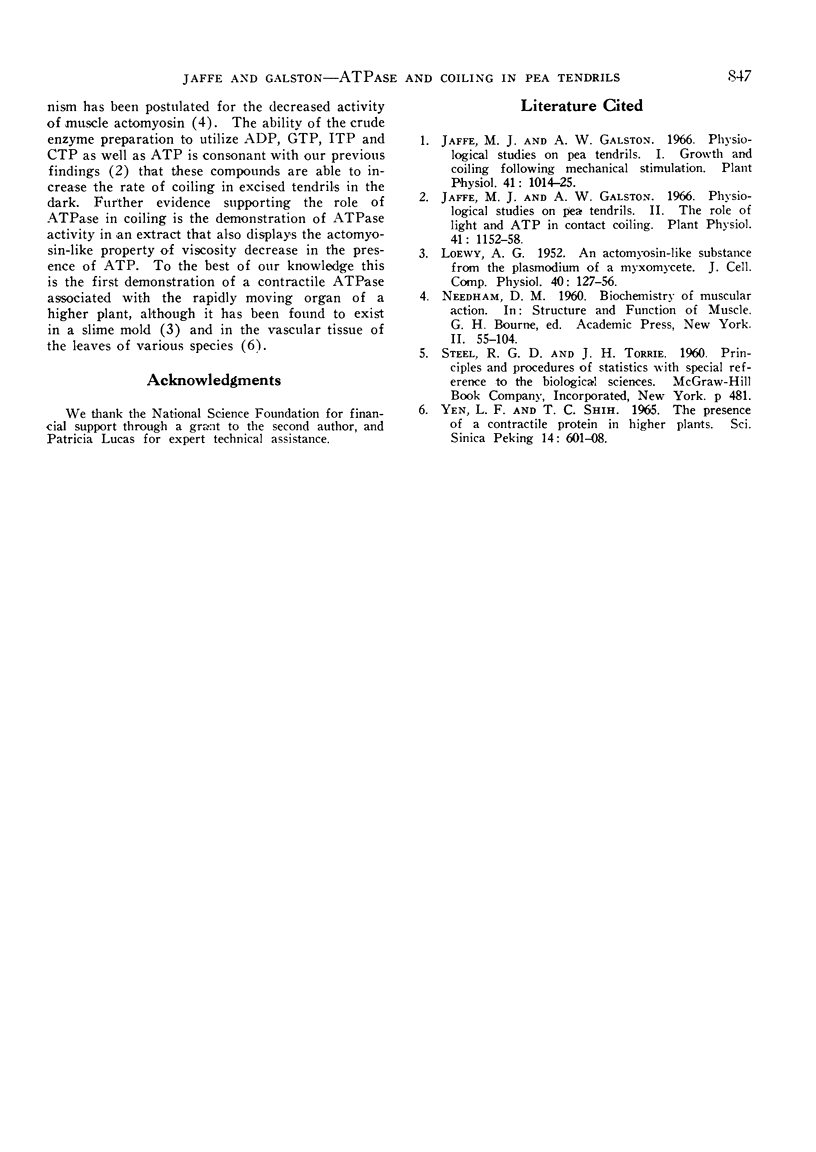Abstract
Extracts of the tendrils of Pisum sativum, Var. Alaska, exhibit adenosine triphosphatase activity which is inversely proportional to the amount the tendrils have coiled. The specific viscosity of the extract decreases when ATP is added. This evidence indicates a possible role of a contractile adenosine triphosphatase in coiling.
Full text
PDF


Selected References
These references are in PubMed. This may not be the complete list of references from this article.
- Jaffe M. J., Galston A. W. Physiological Studies on Pea Tendrils. II. The Role of Light and ATP in Contact Coiling. Plant Physiol. 1966 Sep;41(7):1152–1158. doi: 10.1104/pp.41.7.1152. [DOI] [PMC free article] [PubMed] [Google Scholar]
- Jaffe M. J., Galston A. W. Physiological studies on pea tendrils. I. Growth and coiling following mechanical stimulation. Plant Physiol. 1966 Jun;41(6):1014–1025. doi: 10.1104/pp.41.6.1014. [DOI] [PMC free article] [PubMed] [Google Scholar]
- LOEWY A. An actomyosin-like substance from the plasmodium of a myxomycete. J Cell Physiol. 1952 Aug;40(1):127–156. doi: 10.1002/jcp.1030400109. [DOI] [PubMed] [Google Scholar]


